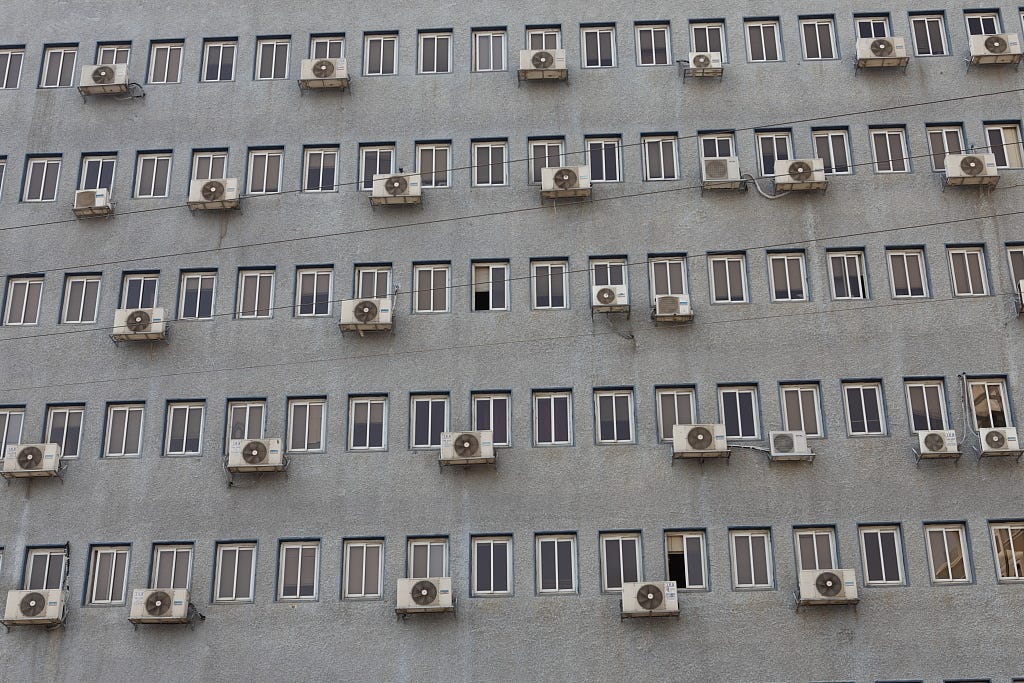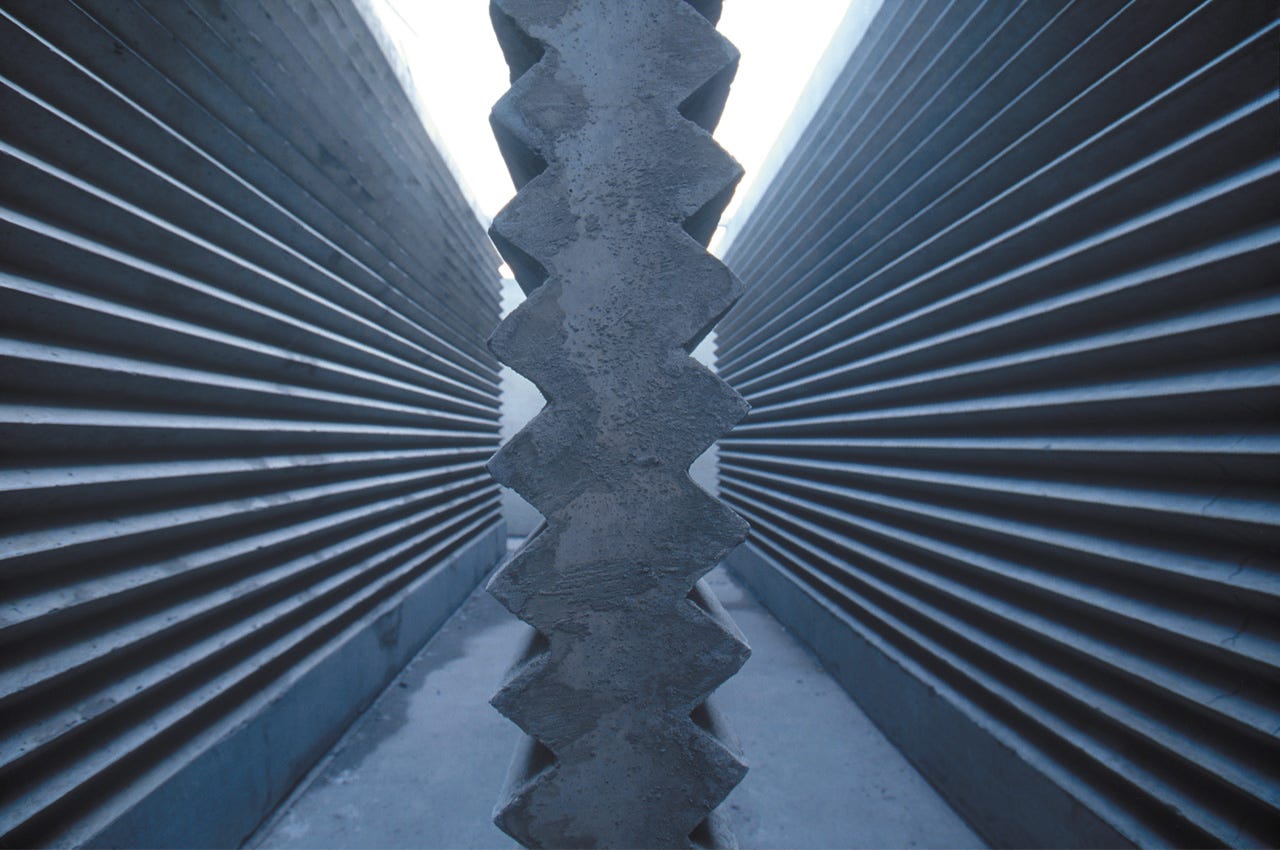Heat
Hotter summers call for imaginative adaptations. We won't get them.

I vividly remember, during my summer holidays as a child, waking up excited to watch the cricket test match, only to find that play had been rained off. Again. I would turn on the TV and feel my heart sink at the sight of low, leaden cloud and groundsmen pulling rain covers onto sodden outfields. In hindsight, it was part of the drama of a fair-weather summer sport in a country where summers were rarely fair (and, perhaps, a useful introduction to the disappointments of life). Even when the rain stayed away, the players often wore thick wool jumpers in July.
That feels like another country today. For a few weeks in late spring and early summer, southern England now has arguably the best climate in the world: warm and verdant, with long days and soft breezes. After that, however, come long stretches of baking sun, with very little rain. My family in southern Africa would be appalled to hear me say it, but much of the British summer is simply too hot now. As Duncan Robinson points out in his amusing Bagehot column, Brits have not yet accepted that they live in a hot country, and so have not adapted their habits. Meanwhile, there is plenty of evidence that excessive heat is detrimental to sleep, appetite, energy levels, mood and cognition, among other things. Hence the finding that people in hot countries reliably buy air conditioning in large numbers once they reach average income levels of around $10,000 annually (a trend which means that, by 2050, India will consume more electricity for air con than the entire African continent will consume for everything). Heat has political implications too. The demonstrations and riots which are becoming a feature of British summers usually happen when temperatures are high. Phrases like “boiling point” and “simmering tensions” are less figurative than they sound.
And this is not the only way that hot spells threaten the legitimacy of the governing classes. Despite the fact that Britain’s public authorities have been anticipating climate change for decades, our buildings and public spaces are still totally unsuited to heat. In fact, the reaction to climate change has made the problem considerably worse. Measures to insulate homes against cold weather, so as to lower carbon emissions from heating, have turned many properties into ovens in hot weather. Air conditioning is likewise discouraged on emissions grounds. Building regulators have decreed that air con can only be installed if passive cooling options – meaning design features that regulate temperature without the use of energy – have been exhausted first. These options, which have not turned out to be very effective in heat waves, include adjacent green spaces, cross ventilation, and tiny windows (passive cooling mandates are one of the reasons that so many new builds in Britain look like prisons).
As a result, almost no new dwellings have been built with air conditioning, and the media is full of angry residents of expensive London apartments suffering in temperatures above 30C. Most perversely, while the government offers subsidies for homeowners to install heat pumps as a green alternative to gas heating systems, those subsidies don’t yet apply if the pump provides air conditioning as well.
The addition of brutal heat to Britain’s cramped apartments and visibly decaying public spaces plays into the fear that the country is entering a quasi-third-world state. According to Politico, London’s tube trains frequently exceed the temperature at which it is legal to transport cattle. When I was researching this subject, my advertising algorithms began targeting me with a British-designed portable cooling system called “Nurabreeze.” Ominously, the makers thought it worth emphasising that it remains functional during power cuts.
Yet the official preference for passive cooling, though badly implemented, accords with good design principles. It may be, as some have suggested, that filling the English countryside with solar power plants facilitated by Chinese slave labour will soon grant us abundant clean electricity for air conditioning. But even if air con will be necessary in many places, it should not be the first and only way to combat heat. Air con is the kind of solution that encourages architects and planners to ignore the conditions of the places they are designing for, in favour of templates that can be profitably erected anywhere – the classic example being the high-rise apartment building, which is uninhabitable without air conditioning in humid cities. In this sense, it is like flattening a hillside rather than building into its sides, or erasing an existing street plan to replace it with a grid. Such alienated structures risk producing alienated inhabitants.
So why aren’t designers proposing better forms of passive cooling? Actually, they are. The world’s vernacular architectures contain a wealth of cooling methods that predate air conditioning by centuries. Some are very simple, such as high ceilings to allow warmth to rise overhead (a technique used by the Victorians) and shutters to shield large windows from sun (as seen across France). Many structural features are designed to produce shade, like loggias, overhangs, and internal courtyards. Other vernacular methods are more sophisticated, as this study of traditional Iranian architecture suggests.

Of course, modern ingenuity and engineering can be brought to bear on passive cooling as well. A thermal labyrinth, for instance, is an underground structure which passes air through a maze of cool, thermally absorbent surfaces before it enters a building. A house can even be insulated against extremes of temperature by burying it under a mound of earth, much like a Hobbit hole.
So the problem is not a lack of ideas. It is the unlikelihood of the ideas being translated into actual buildings. Partly this is due to the rather hypothetical way that such “solutions” are discussed, whether in academic papers, NGO reports or the media. “This could be a really useful way to combat heat [leaving aside the one-hundred practical obstacles to doing it on a significant scale].” New materials and architectural elements require building regulations to be updated, knowledge to be transmitted and workforces to be trained. Above all, they have to compete on cost, which means good supply chains and economies of scale. Though some think tanks do detailed policy work on design, there generally seems to be a big gap between the idealistic atmosphere in which ideas are generated and the constrained reality where they must be implemented.
On the other hand, it’s not as though British property developers, builders and government bodies are striving to meet the designers half way. Many inventive and graceful approaches to passive cooling should be achievable. Why can’t we have towns of turf-covered houses, apartment buildings with shady courtyards, and housing estates atop thermal labyrinths? It is depressing to realise that the various private and public actors who determine our built environment are collectively incapable of trying new things, and will continue to erect the same generic new builds and plastic-panelled offices come what may.
What the problem of Britain’s hot summers reveals, in other words, is a system that is very bad at delivering creative answers to new problems, and often fails to deliver any answers at all. And so people will have to improvise their own solutions, which will likely come in the form of cheap portable devices like the Nurabreeze. As temperatures continue to rise, such gadgets will multiply and become a familiar feature of our lives, until each of us is walking around in a private microclimate.


Perhaps these recent hot summers are a sign that the history of non-avian dinosaurs will not remain unique... but we still have to resist :). As there were countless days this year with temperatures around 40 degrees Celsius, a few scattered rains brought joy and hope to my city. However, I liked how you defined them in a completely different context: "a useful introduction to the disappointments of life." A Japanese monk, who gave some advice in a book, said that the illusions we create for ourselves, self-deception, are a sure path to a lot of frustrations. He understood that we cannot give them up entirely, whether they are small or important matters. But even a smaller number of illusions is already a gain...
Great piece Wessie, those building codes are infuriating at times. And great to see that vernacular architecture may be part of the solution, if only folk would pay attention - but that will call for some humility from our modern day architectural schools with their disdain for anything that smells of tradition and vernacular.
We moved to the North this year from Essex (the land of eternal sunshine as I like to call it). The drop in temperature has been noticeable - especially in the summer.
Which leads me to a thought that has just popped into my head: perhaps if temperatures in the south continue to rise, we will see some level of demographic relocation to cooler British latitudes? Very much speculative but it will be interesting to see (that being said, gas bills are higher up here in the winter which may act as a deterrent!).